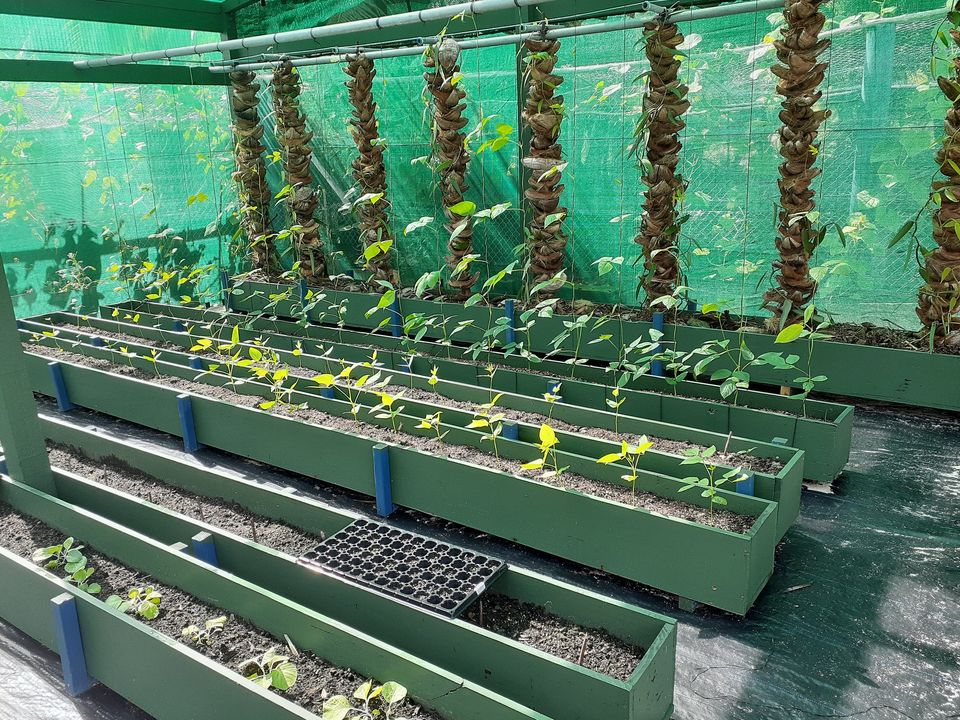Thriving gardens on Palmerston Island
Thursday 8 June 2023 | Written by Al Williams | Published in Education, National, Outer Islands

Lucky School on Palmerston has been fortunate to have secured garden materials from the Adaptation Fund PEARL Project. CLIMATE CHANGE CI/23060750
School students on Palmerston Islands are developing green fingers.
Lucky School on Palmerston has been fortunate to have secured garden materials from the Adaptation Fund PEARL Project.
According to the island’s executive officer Arthur Neale, the materials enabled the construction of a shade garden for the school, which was built by administration staff on the island.
Students from the school have an extended class every Thursday morning, learning about gardening which is taken by the agriculture officer on Palmerston.
Thus far, students are growing cabbages, string beans, bokchoi and cucumbers.
They also have vanilla vines growing in planters and other crops planted in food cubes.
Neale said he is overly excited and proud of the results achieved so far and further stated, “the chipper received by the school is the key to the healthy crops from all the composting added to the soil, enhancing growth to the plants.”
The school is also looking at experimenting with other crops in the future.
Palmerston Island has about 30 inhabitants. It has no airport or airline services and takes about two days to reach from Rarotonga by boat. It also has a colourful backstory.
Although Captain Cook landed on the island in 1777, it was in 1863 that William Marsters, a ship’s carpenter and barrel maker, arrived on Palmerston from Manuae with two Polynesian wives.
He took a third wife and had a large family of some 23 children, whose descendants now inhabit Palmerston. As a result, Palmerston Island is the only island in the Cook Islands for which English is the native language.




































